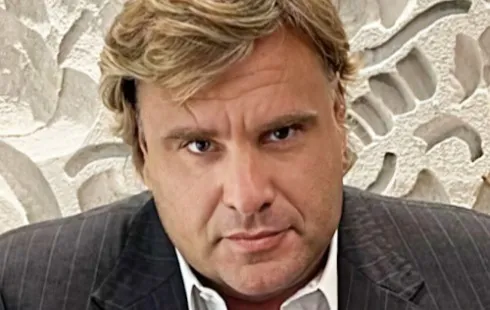
Pantone's Color of the Year an Endless Neutral Loop
Section: Fashion
" O' zapft is! " it means " is already open", the Mayor opens at twelve o'clock of the night the first beer keg in the tent Schottenhammel, twelve cannon salvos are fired from the steps of the statue that represents Baviera, this is the signal for the Wiesnwirte (the owners of the beer) to start serving beer. The origin of the Oktoberfest dates since 1810, when the prince Ludwig, later to become King Ludwig I, was married to Princess Therese of Saxony-Hildburghausen on 12 October 1810. The citizens of Munich were invited to attend the festivities held on the fields in front of the city gates to celebrate the happy royal event. The fields were renamed Theresienwiese ("Therese Fields") to honor the Crown Princess, although the locals have since abbreviated the name simply to "Wiesn". Horse races in the presence of the royal family marked the close of the event that was celebrated as a festival for the whole of Bavaria. The decision to repeat the horse races in subsequest years gave rise to the tradition of Oktoberfest.
In 1811, an added feature to the horse races was the first Agricultural Show, designed to boost Bavarian agriculture. The horse races, which were the oldest - and at one time - the most popular event of the festival are no longer held today. But the Agricultural Show is still held every three years during the Oktoberfest on the southern part of the festival grounds.
Since 1819 it became an annual event, that takes place in the Munich City during September and October, is the biggest folk party of Germany.
Munich, Capital city of Baviera, is a lovely place to visit, the old downtown and Marienplatz is one of the main atractions. The city is surrounded of fantastic mountains, crystalline lakes and enchanting castles. The best place to enjoy of a beer is Hofbrauhaus, known as a symbol of Munich, situated in the downtown of the city. Every year around six millions of visitants attends to the Oktoberfest, it lasts between sixteen and eighteen days, it is celebrated in the field known as "Theresienwiese".
In the first few decades, the choices of amusements were sparse. In 1818, the first carousel and two swings were set up. Vistitors were able to quench their thirst at small beer stands, which grew rapidly in number. In 1896 the beer stands were replaced by the first beer tents and halls set up by the enterprising landlords with the backing of the breweries. The reminder of the festival site was taken up by a fun-fair. The range of carousels offered was already increasing rapidly in the 1870's as the fairground trade continued to grow and developed in Germany.
In the first Sunday of the festival eight thousand of participants get dressed with the historical costumes and parade from the Maximillaeneum Palace up to the place where the festival starts. The parade represents the arrival of the "Wirte", the owners of the beer.
The festival it was only stopped during the First World War between 1914 and 1918, and briefly by cholera epidemics. During the Nazi government the Baviera's flag was replaced for the swastica flag.
The beer's tents are the main attraction of the Oktoberfest. People can also enjoy of typical food such as Hendl (chicken), Schweinebranten (roast pork), Wurstl with Bresen (sausage with pretzels). Live music bands plays traditional and popular music.
For a cozy and traditional experience, visitors can head for the Augustiner Festzelt. Its particularly authentic atmosphere is partly thanks to the fact that the beer served here comes from Munich's oldest brewery and is still tapped from classic wooden kegs. The regional delicacies and the friendly waiters and waitresses also make the Augustiner tent one of the most rustic of them all. Fischer Vroni, the Hippodrom, Hackerbraü Festhalle, Horfbraü Fetzelt and the Käfer Wies´n Schänke are some of the most well known beer tents.
In 2005 the "Oktoberfest Quiet" started in order to invite the children and older people to participate, music of eighty five decibels is not allowed until 18hs, during the day the bands play traditional music and at night popular.
This festival became so important that now is celebrated in several countries like Brazil (Blumenau), United States (Galveston) and Argentina, where the biggest festival outside of Germany is held. It takes place in Villa General Belgrano (Cordoba, Argentina), the city has the typical Bavarian architecture, and their first citizens were German immigrants, 127 families that made of Villa General Belgrano the biggest German colony in Argentina. It lasts a week. It is also celebrated in Venezuela in the Tovar Colony, in Chile, Belgium, Peru and Spain
The Oktoberfest is an excellent opportunity to enjoy the typical food, music, culture and beer of Germany all in the same place; if you decide to visit Germany you must do it during the Oktoberfest. In 2014 it will take place from September 20th to 5th of October.
Today, the Oktoberfest is the largest folk festival in the world, with an international flavor characteristic of the 21th century: some 6 million visitors from all around the world converge on the Oktoberfest each year.
And since the Oktoberfest is still held on the Theresienwiese, the locals still refer to the event simply as the "Wies'n". So "welcome to the Wies'n" means nothing other than "welcome to the Oktoberfest"!

Section: Fashion

Section: News

Section: Business

Section: Fashion

Section: Business

Section: Arts

Section: Politics

Section: Health Insurance

Section: News

Section: News
Both private Health Insurance in Germany and public insurance, is often complicated to navigate, not to mention expensive. As an expat, you are required to navigate this landscape within weeks of arriving, so check our FAQ on PKV. For our guide on resources and access to agents who can give you a competitive quote, try our PKV Cost comparison tool.
Germany is famous for its medical expertise and extensive number of hospitals and clinics. See this comprehensive directory of hospitals and clinics across the country, complete with links to their websites, addresses, contact info, and specializations/services.
Join us for an enchanting Christmas adventure at the Münchner Marionettentheater! Experience the marionette play 'Der verschwundene Wunschzettel' by Siegfried Böhmke, featuring our beloved Kasperl Larifari and his little friend Stupsi. As Christmas approaches, both Kasperl and Stupsi have prepared...



No comments yet. Be the first to comment!